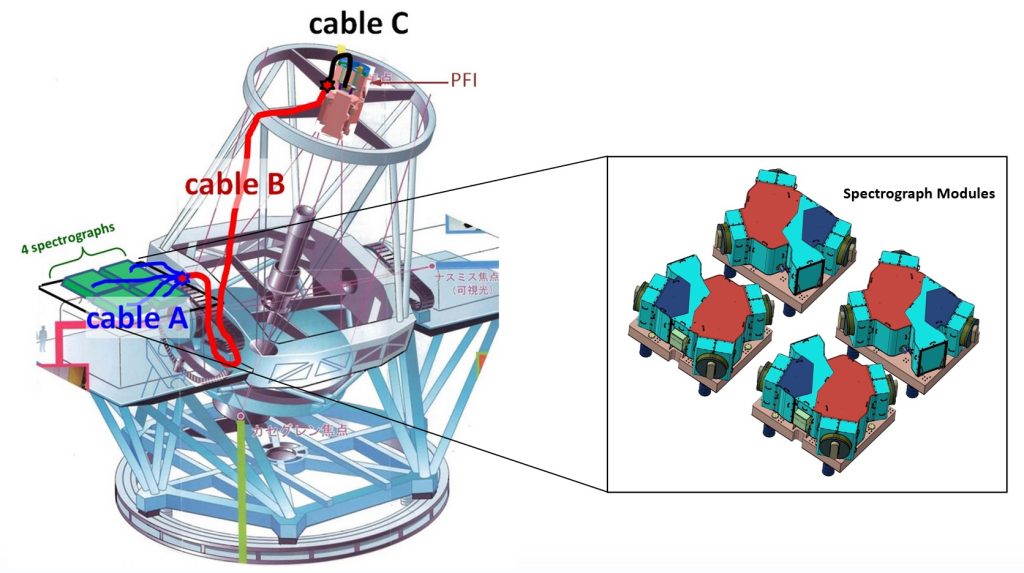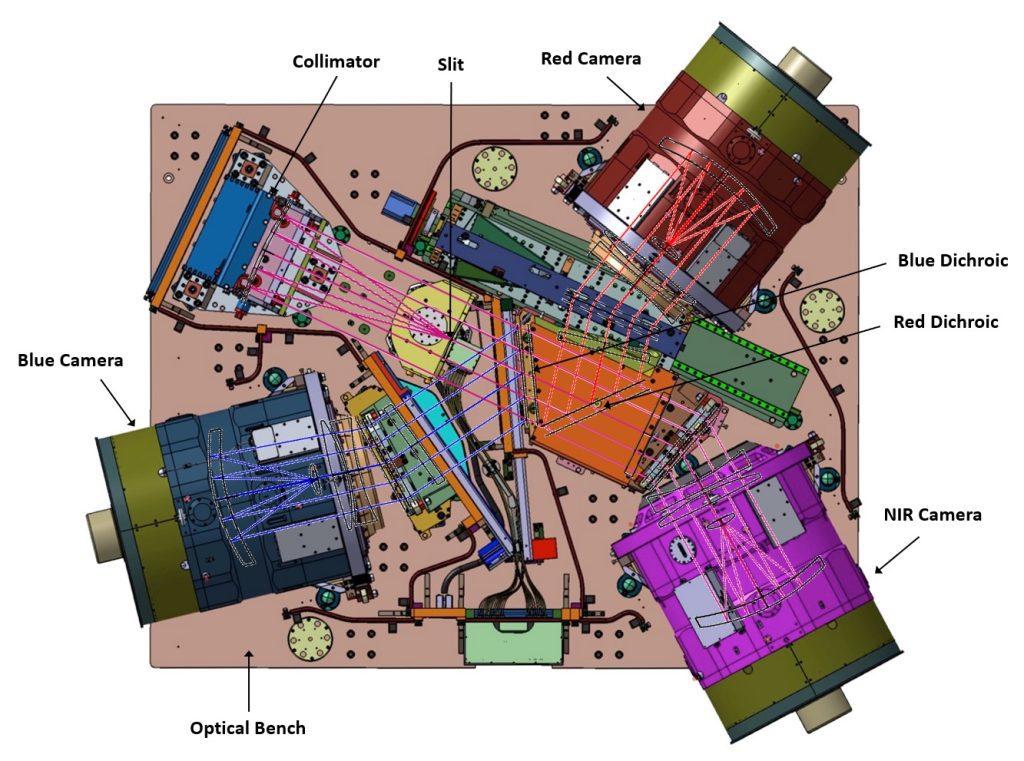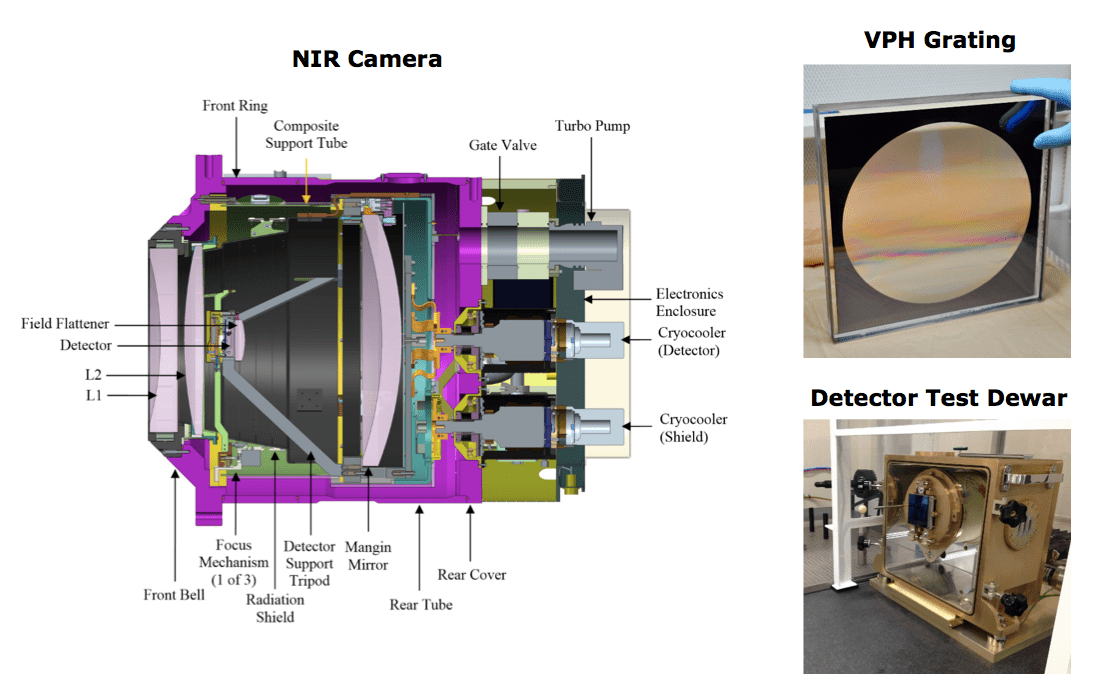
The Subaru Prime Focus Spectrograph (PFS) has been endorsed by Japanese community as one of the main future instruments of the Subaru 8.2-meter telescope at Mauna Kea, Hawaii. This optical/near-infrared multi-fiber spectrograph will be used to study cosmology, Galactic archaeology, and galaxy/AGN (Active Galactic Nuclei) evolution.
Taking advantage of Subaru’s wide field of view, which is further extended with the recently completed Wide Field Corrector, PFS will enable us to carry out multi-fiber spectroscopy of 2400 targets within a 1.3 degree diameter. Fibers are accurately located on celestcial target positions by robotic positioners, each of which consists of a two-stage piezo-electric rotary motor. Fibers then carry light to a set of four three-channel spectrograph modules having a wavelength range from 0.38 um to 1.3 um, and an average resolving power of 3000. PFS will provide the unique capability of obtaining optical and near infrared spectra of 2400 cosmological/astrophysical targets simultaneously with an 8-10 meter class telescope.

IDG Contributions:
- Near infrared cameras
- Visible camera cryostats
- Detector electronics
- Detector testing
- VPH grating characterization

